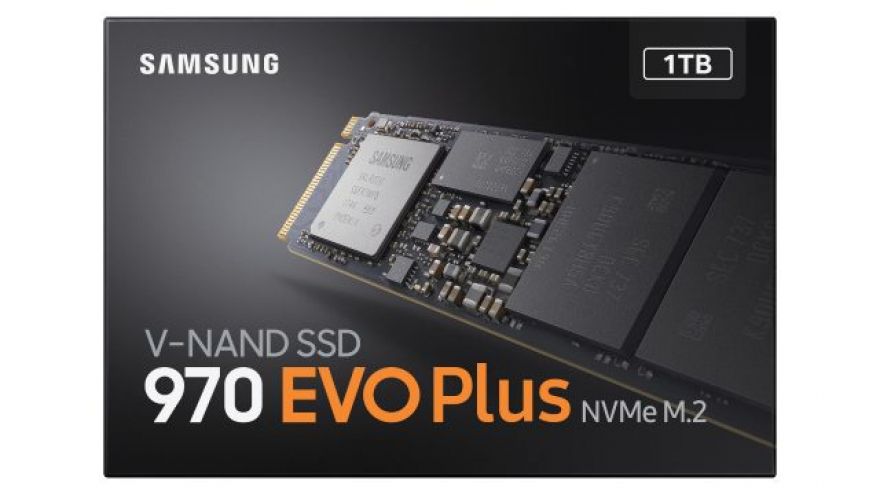
Samsung Blames Pandemic for Bait-and-Switching Customers
A few weeks ago, we covered the news that multiple SSD manufacturers including Crucial, Western Digital, and Samsung had been caught bait-and-switching customers. Specifically, the new drives these companies are shipping do not always offer as much performance as the versions sampled for review.
We heard from Crucial and Western Digital quickly, but Samsung took a bit longer to get back to us. The company has sent over a statement on the topic, reprinted below:
To ensure continued production of the popular Samsung 970 EVO Plus, Samsung has decided to upgrade the controller and NAND in the 970 EVO Plus and has updated the firmware to the new version “3B2QEXM7”.
We believe that by increasing the intelligent TurboWrite buffer and optimizing software, our devices will even better meet the growing needs of consumers and improve the overall user experience.
With the release of the new version of the 970 EVO Plus drive, Samsung has posted an updated datasheet on its website. In the event of subsequent component updates, the company will keep the entire change history available on an ongoing basis to ensure transparent communication with customers.
The 970 EVO Plus has a similar problem to the Crucial P2 and WD SN550, in that performance on the newer drives also craters when the SSD has exhausted its cache. The performance hit on the 970 EVO Plus is ~50 percent according to tests run on the drive, while the Crucial P2 can lose as much as 75 percent of its performance.
Drives like the Samsung 970 EVO Plus don’t drop to 100MB/s – 300MB/s, but they still take a heavy hit. (Photo: 潮玩客)
ExtremeTech verified that Samsung has indeed updated the datasheet on the 970 EVO Plus, but the updated version does not resolve our concerns. Here’s a link to version 2.0 of the datasheet, via the , and a to version 3.0.
Samsung has made several changes. Version 2.0 of the document contained an entire page of performance references and marketing claims (shown below), but this page is missing from v3.0.
This page has been entirely removed.
Samsung has made two adjustments to the actual drive specifications. First, version 2.0 of the document referred to the drive offering the “Samsung Phoenix Controller,” while v3.0 references the “Samsung in-house controller.”
The only other change the company has made concerns a footnote. In version 2.0 of the document, footnote 4 read:
Sequential and random write performance was measured with Intelligent TurboWrite technology being activated. The sequential write performances for the portion of data exceeding over Intelligent TurboWrite buffer size are: 400 MB/s for 250GB, 900 MB/s for 500GB, 1700 MB/s for 1TB and 1750 MB/s for 2TB. The random write performances for the portion of data exceeding over Intelligent TurboWrite buffer size (tested with QD 32 Thread 4) are: 100,000 IOPS for 250GB, 200,000 IOPS for 500GB, 400,000 IOPS for 1TB and 420,000 IOPS for 2TB. Performance may vary depending on SSD’s firmware, system hardware & configuration and other factors.
This has changed. Footnote 4 now reads:
Sequential and random write performance was measured with Intelligent TurboWrite technology being activated. Intelligent TurboWrite operates only within a specific data transfer size. Performance may vary depending on SSD’s firmware, system hardware & configuration and other factors. For detailed information, please contact your local service center.
These are the only three changes in the document. There are no new model numbers or SKUs mentioned and no discussion of the difference in performance between its various products.
Samsung’s method of addressing this problem, it seems, is to blame the pandemic and remove data from its datasheets. Unlike Crucial and WD, it has not pledged to address the problem with customers who are unhappy with the performance of their drives. The updated datasheet does not acknowledge that there are multiple 970 EVO Plus drives in-market with different controllers and different levels of performance. Samsung did not provide any additional information on which drive models were impacted or whether it intended to use this strategy in other products.
It is difficult to believe that Samsung intends to “keep the entire change history available on an ongoing basis” in the future given the tenor and nature of its response today. Samsung’s edits to the 970 EVO Plus’s datasheet don’t clarify anything, they remove performance claims and sweep the issue further under the rug.
What this means, in aggregate, is that there are two different versions of the 970 EVO Plus in-market today and consumers have less guidance than ever on which version they received.
The pandemic and possibly a winter storm last winter may explain why Samsung was forced to change components, but there is no justifiable explanation for why Samsung and other manufacturers have swapped components without updating SKUs, model numbers, or even just sampling new versions of old drives for review. Samsung has not addressed our concerns regarding the 970 EVO Plus and performance on this drive cannot be assumed to match reviews if those reviews were written before mid-2021.
Intel is the only manufacturer currently known not to be swapping NAND and/or memory controllers without notifying the public or the press. Intel to ExtremeTech that it does not swap components without launching new product SKUs.
Now Read: